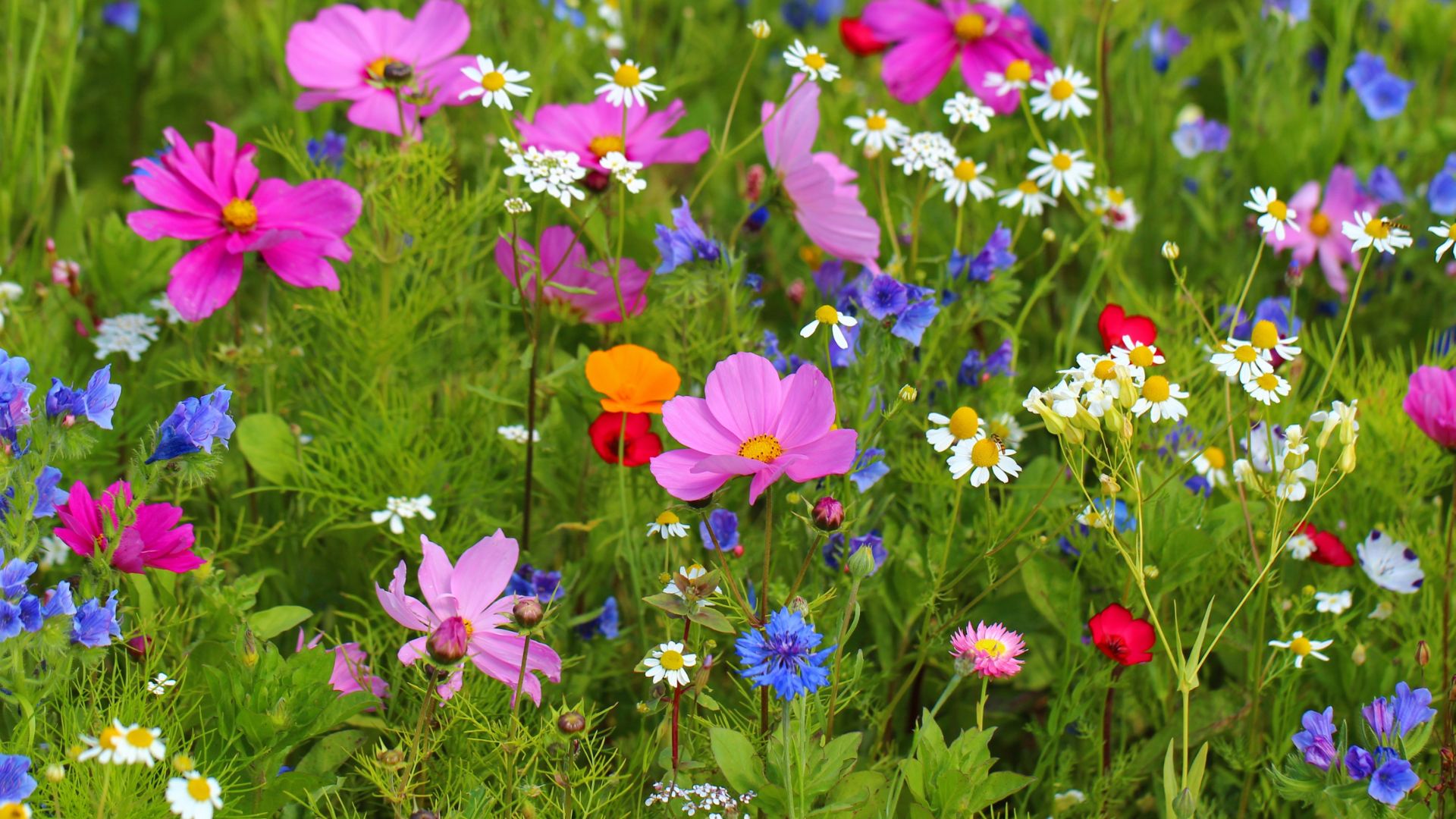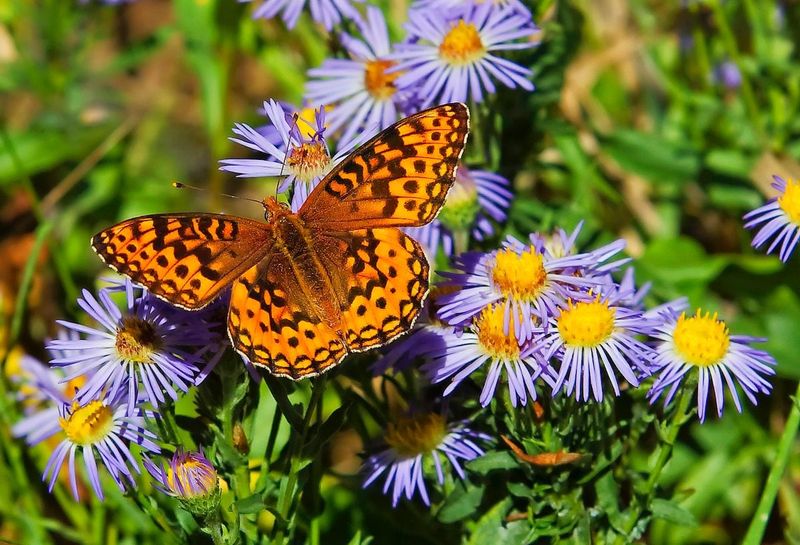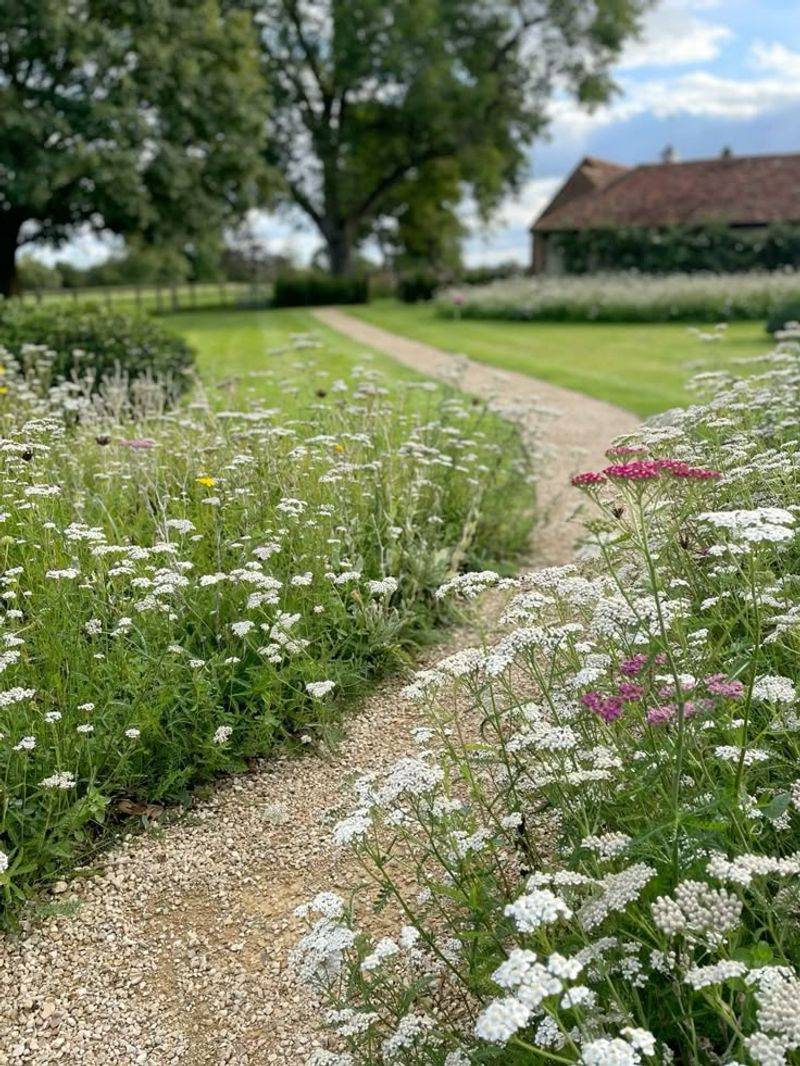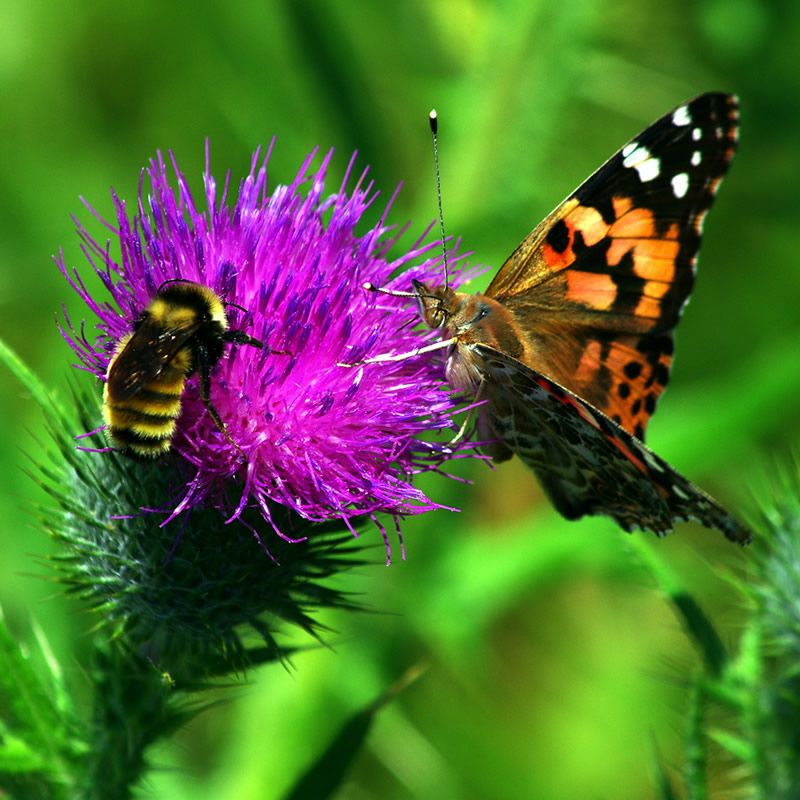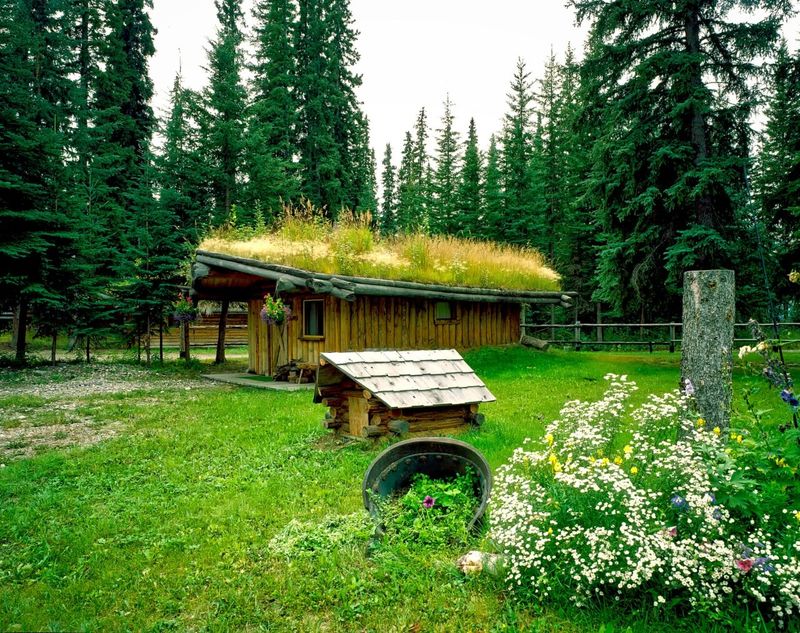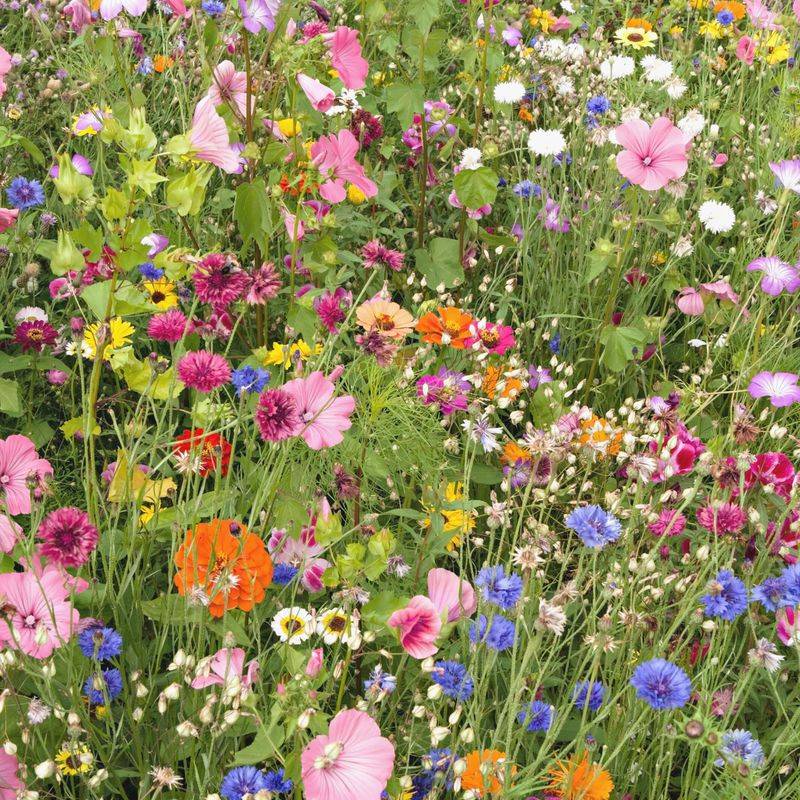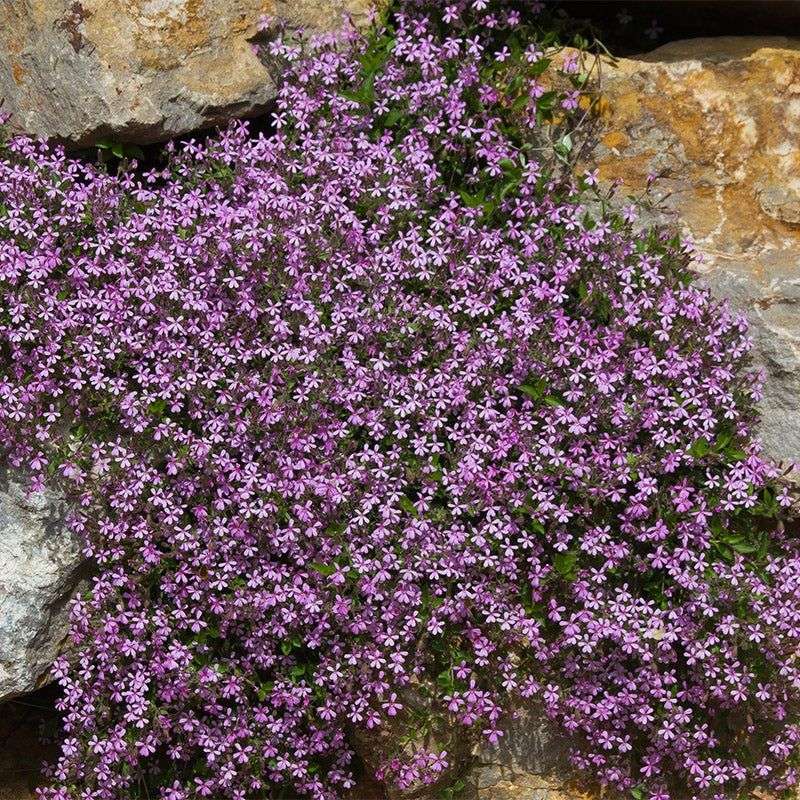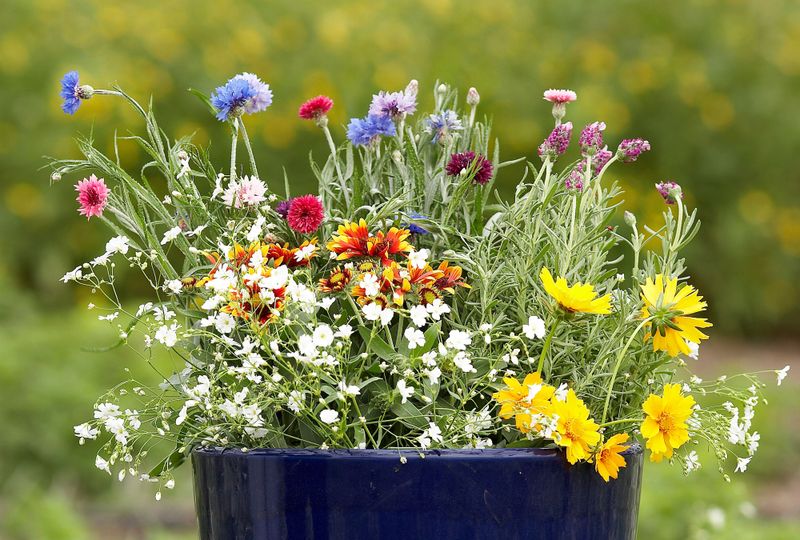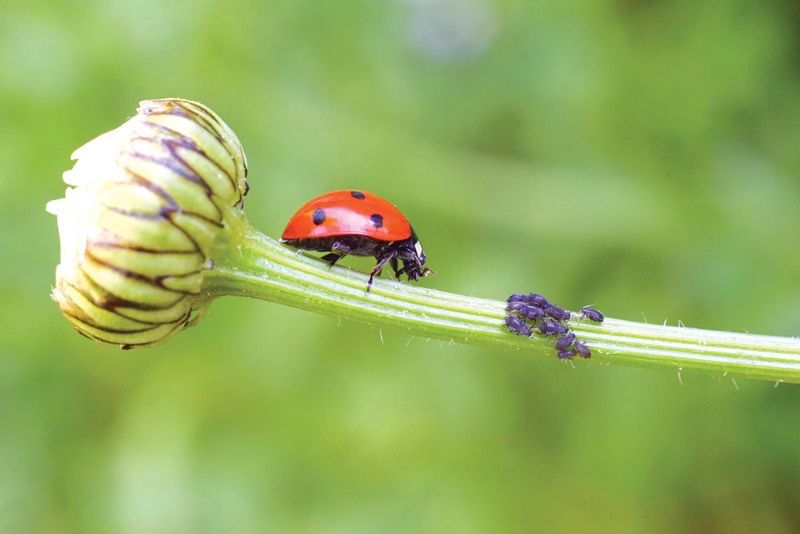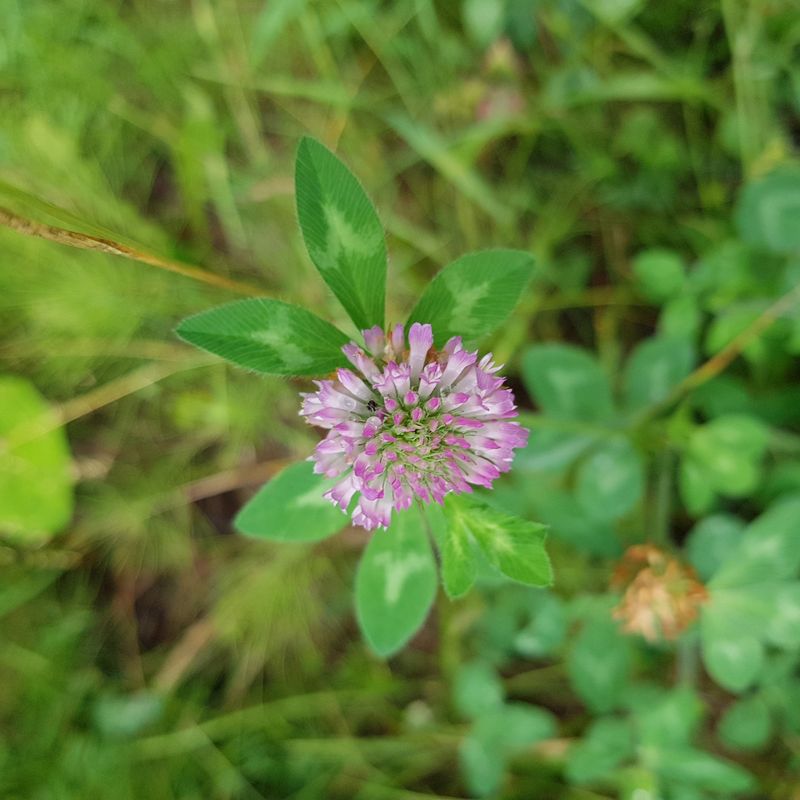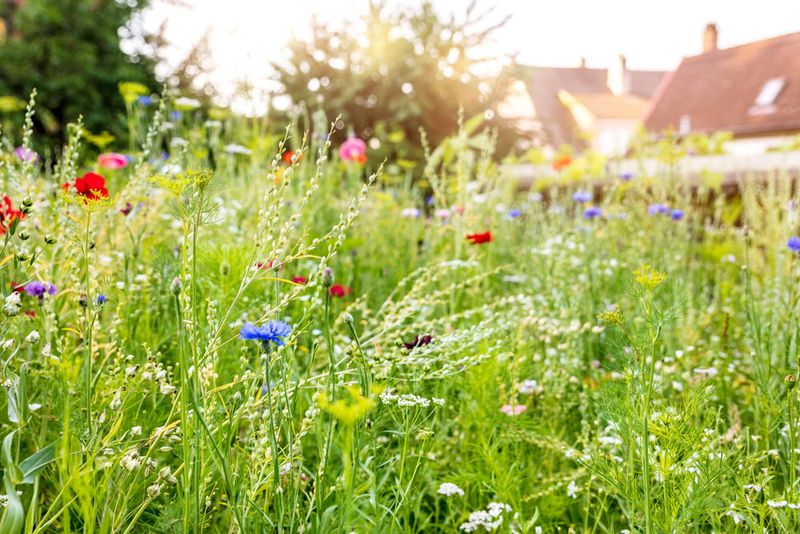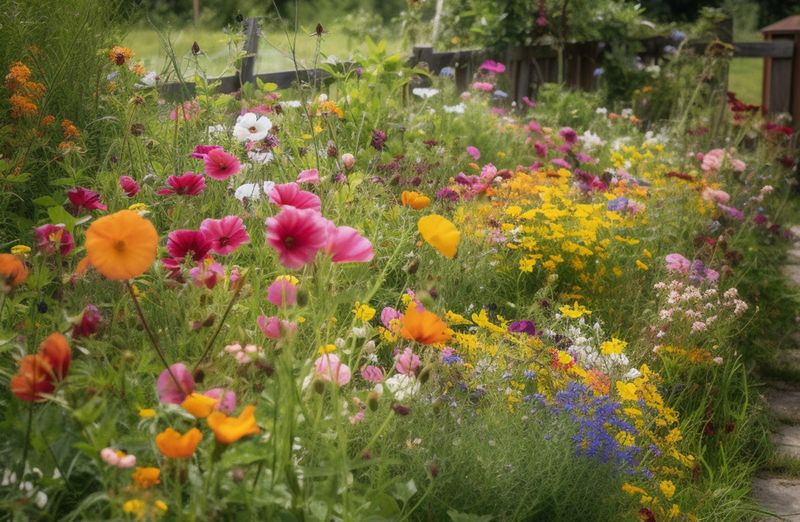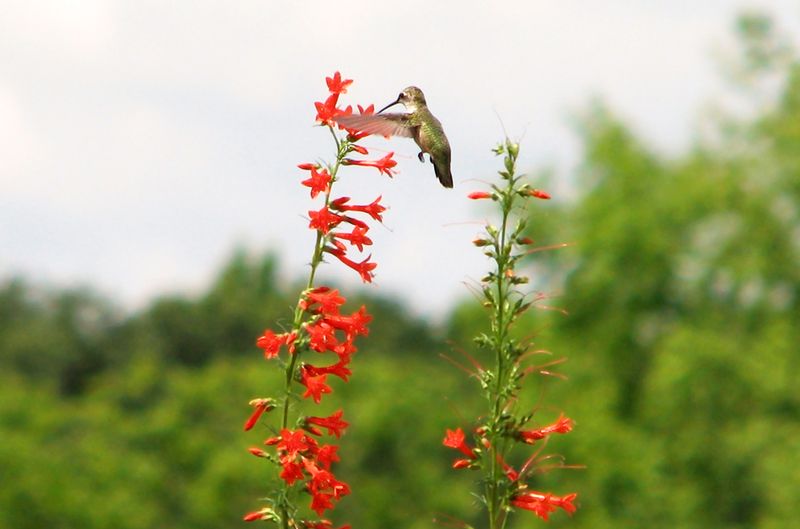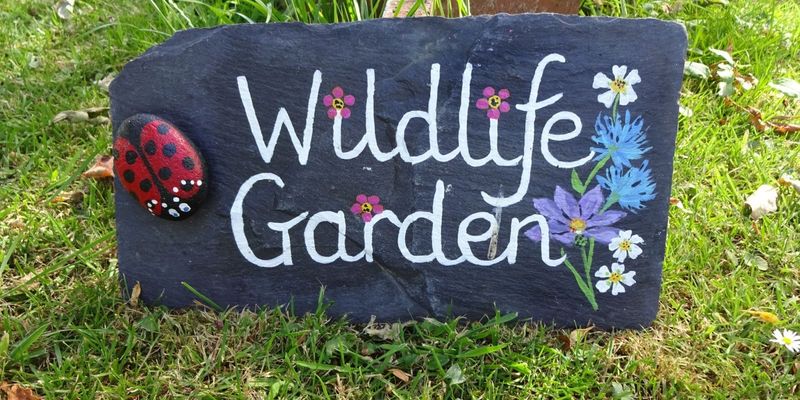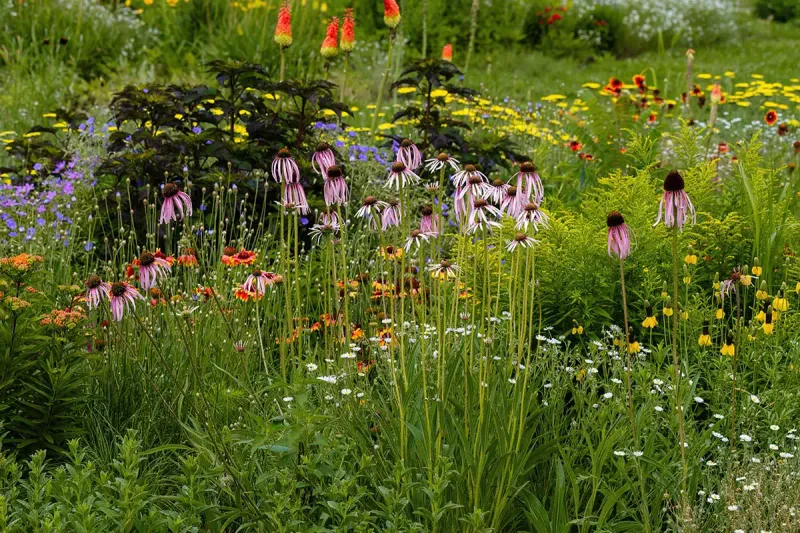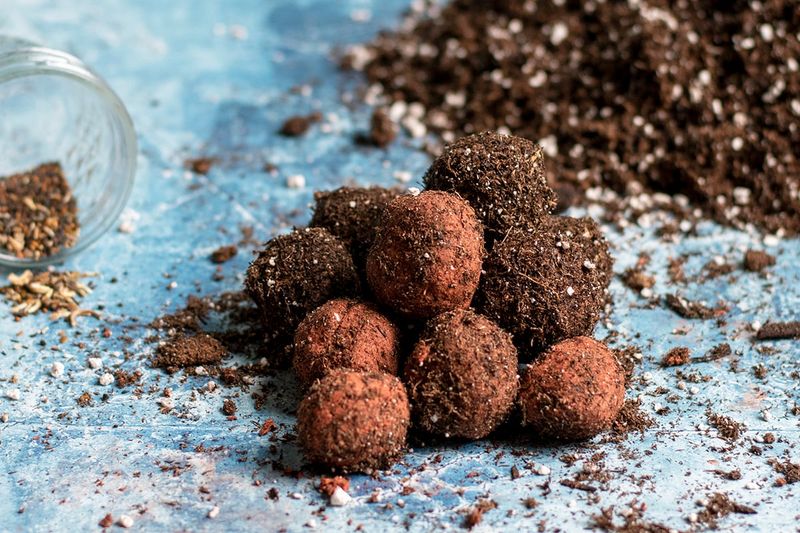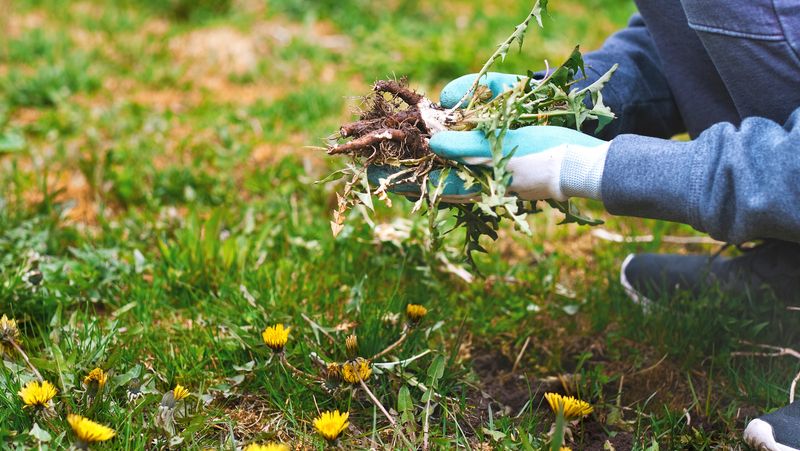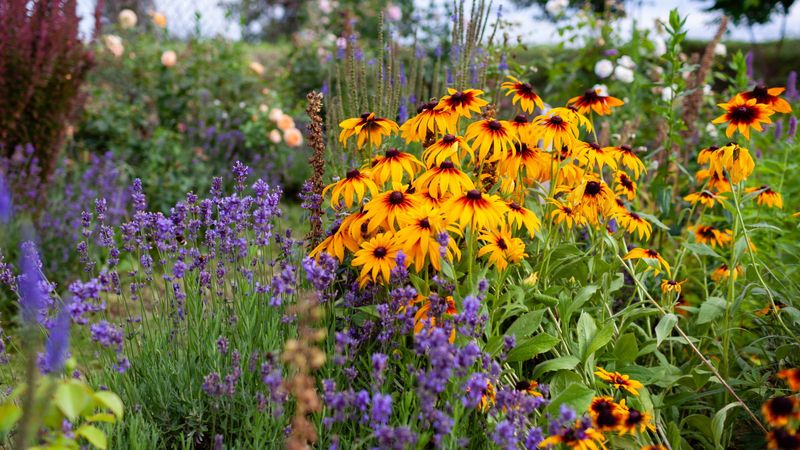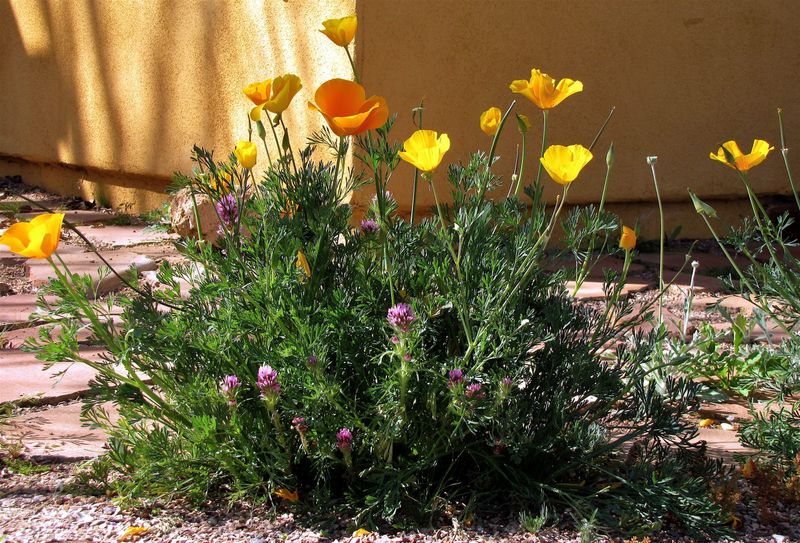There’s something truly special about wildflowers. They don’t just bloom—they burst into life with a carefree beauty that feels both effortless and intentional. And the best part? You don’t need to be a landscape designer to make it work.
I’m sharing 16 fun and creative ways to use wildflowers around your yard—ideas that I’ve either tried myself or seen work wonders in real-life gardens.
Whether you’re starting from scratch or looking to add a wild touch to your current setup, these tips will help you enjoy a beautiful, low-maintenance, and pollinator-friendly garden that feels a little more like nature—and a lot more like home.
1. Create A Wildflower Meadow
Imagine a sea of color waving gently in the breeze. Creating a wildflower meadow is about selecting native species that thrive in your local climate. Begin by clearing the area of grass and weeds, then sow seeds according to the season’s timing.
Wildflower meadows provide a habitat for pollinators and are visually striking with minimal maintenance. Remember to mow once a year to maintain diversity. This method is excellent for covering large spaces with natural beauty.
2. Design A Wildflower Pathway
Transform ordinary walkways into enchanting journeys by planting wildflowers along paths. Choose varieties that grow well in partial shade or full sun, depending on your garden’s layout. Stagger planting times to ensure blooms throughout the seasons.
Paths lined with wildflowers invite exploration and add a whimsical touch to your garden. Regular trimming helps keep the path clear and enhances the aesthetic appeal.
3. Attract Pollinators With Wildflowers
Wildflowers like coneflowers and milkweed are magnets for pollinators. By choosing plants that bloom at different times, you can provide a continuous food source for bees and butterflies.
This not only supports local ecology but also enhances fruit and vegetable yields. Always opt for native species to ensure compatibility with local wildlife. Creating a pollinator-friendly garden is a rewarding way to contribute to environmental health.
4. Install A Wildflower Roof
Bring wildflowers to unexpected places by installing a green roof on sheds or garages. A wildflower roof not only insulates buildings but also supports biodiversity.
Ensure the structure can bear the additional weight and use a suitable growing medium. This creative approach turns rooftops into thriving gardens, providing a unique perspective on traditional gardening. Maintenance includes occasional watering and weeding.
5. Create A Wildflower Border
Adding a wildflower border is a clever way to define garden spaces while boosting visual appeal. Select plants of varying heights to create an attractive layered effect. Wildflower borders not only enhance aesthetics but also attract beneficial insects that help control pests.
Regular deadheading encourages new blooms and keeps the border looking fresh and pretty. This method is versatile and works in many garden designs.
6. Use Wildflowers For Groundcover
For areas where grass struggles or mowing is a chore, wildflowers can offer a delightful solution. Low-growing varieties create a colorful carpet that requires minimal upkeep.
Choose species that thrive in local conditions and consider their sunlight and water needs. Groundcover wildflowers suppress weeds, reduce soil erosion, and add visual interest. This approach suits both small yards and expansive spaces.
7. Plant Wildflowers In Containers
Container gardening with wildflowers offers flexibility for those with limited space. Select pots with good drainage and fill them with soil suited to your chosen species. Containers let you control the environment, making it easy to move plants to optimal sun or shade.
Regular watering and feeding keep the blooms beautiful. This method allows anyone to enjoy wildflowers, even on a small balcony or urban terrace.
8. Wildflower Natural Pest Control
Certain wildflowers attract beneficial insects like ladybugs and lacewings that prey on common garden pests. Incorporating these plants reduces the need for chemical pesticides and supports a healthy ecosystem.
Select wildflowers known for attracting pest-controlling insects and plant them strategically within your garden. This natural pest control method is eco-friendly and promotes biodiversity.
9. Edible Wildflower Garden
Mix beauty with utility by growing edible wildflowers such as nasturtiums and violets. These flowers add color to your garden and can be harvested for salads and garnishes.
Make sure that you correctly identify edible varieties to avoid any toxic plants. By incorporating edible wildflowers, you enhance your culinary options while enjoying a beautiful garden. This approach merges aesthetics with practicality.
10. Create A Wildflower Pond Edge
Enhance the edges of ponds or water features with wildflowers that thrive in moist conditions. These plants stabilize the soil, provide habitat for wildlife, and create a picturesque setting.
Choose species like marsh marigold and flag iris, which are well-suited to wetter environments. Wildflower pond edges merge aquatic and terrestrial ecosystems, offering beauty and ecological benefits.
11. Wildflower Lawn Alternative
Swap out a traditional lawn for a wildflower one, reducing the need for mowing and watering. This environmentally friendly option supports biodiversity and offers a dynamic landscape.
Choose perennial wildflowers that suit your climate and soil conditions and allow them to naturalize. A wildflower lawn invites pollinators and creates a living tapestry of color and texture, requiring little maintenance.
12. Seasonal Wildflower Changes
Embrace the changing seasons by planting wildflowers that bloom at different times of the year. This approach ensures that your garden always has something to offer visually. Plan for succession planting, selecting species that complement each other as one fades and another blooms.
Seasonal changes in wildflowers provide ongoing interest and mirror nature’s cycles. This method keeps your garden lively and ever-changing.
13. Wildflower Wildlife Habitat
Wildflowers attract a diversity of wildlife, creating mini ecosystems within your garden. Birds, butterflies, and small mammals find food and shelter among the blooms. Opt for native species to ensure compatibility with local fauna.
A wildflower habitat encourages a balanced ecosystem and supports conservation efforts. This approach brings a lively, dynamic quality to any yard, connecting you with nature’s rhythms.
14. Wildflower Educational Garden
Turn your garden into an educational space by labeling wildflowers with their names and uses. This interactive approach is perfect for families and community gardens. Use informative signs to share details about each plant’s role in the ecosystem.
An educational wildflower garden fosters learning and appreciation for nature’s diversity while providing a beautiful, purposeful landscape. Engage visitors with fascinating facts and gardening tips.
15. Wildflower Water Conservation
Incorporate drought-tolerant wildflowers to reduce water usage without sacrificing beauty. These resilient plants thrive in dry conditions, making them ideal for water-conscious gardeners.
Select species that naturally suit your climate, and group them by their water needs. Wildflower gardens designed for water conservation offer a sustainable solution to landscaping, combining efficiency with aesthetics.
16. Wildflower Seed Bombs
Create seed bombs filled with wildflower seeds to spread beauty in neglected spaces. This fun and easy project involves mixing seeds with clay and compost, forming small balls. Once dry, these can be tossed into bare patches of earth to sprout new life.
Seed bombs are perfect for guerrilla gardening, bringing wildflowers to unexpected places. This method encourages community involvement and environmental awareness.
17. Choosing Invasive Species
Selecting invasive wildflower species can lead to them overtaking your garden. These plants may crowd out native varieties, disrupting local ecosystems. Always research and choose non-invasive species suited to your region.
This simple step prevents long-term problems and maintains biodiversity. Being mindful of plant selection ensures a harmonious balance in your garden, preserving its natural beauty.
18. Overcrowding Wildflowers
Overcrowding occurs when wildflowers are planted too closely, leading to competition for resources like light and nutrients. This can weaken plants and reduce blooms. Space your wildflowers according to their mature size for optimal growth.
Proper spacing encourages healthy development and allows each plant to flourish. By avoiding overcrowding, you create a balanced garden where every flower can shine.
19. Ignoring Soil Conditions
Planting wildflowers in soil that doesn’t meet their needs can result in poor growth. Different species have specific requirements for soil type, pH, and drainage. Conduct a soil test to understand your garden’s condition and amend it as necessary.
By matching wildflowers to suitable soil, you provide the foundation for a thriving garden. This attention to soil health ensures blooms and sustainable growth.

